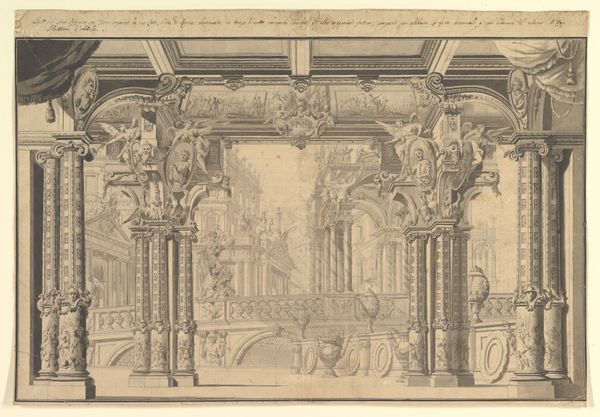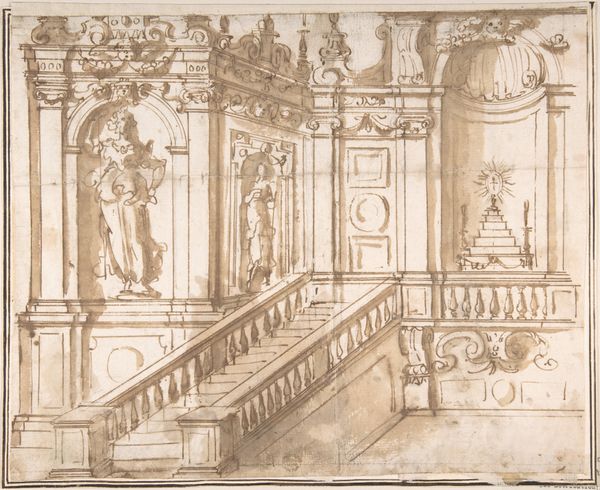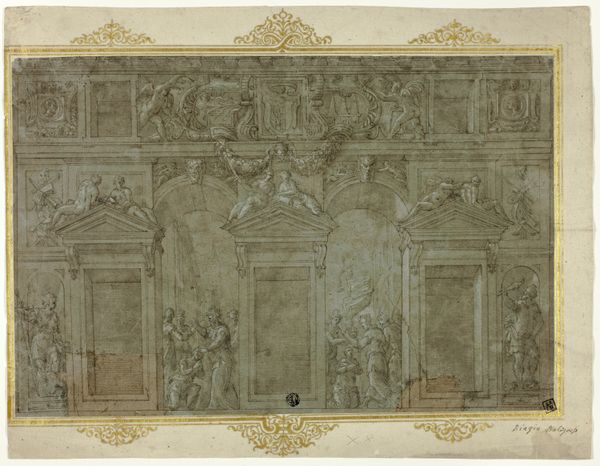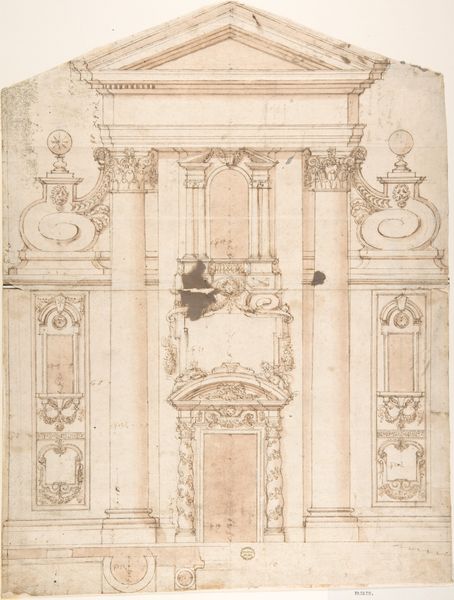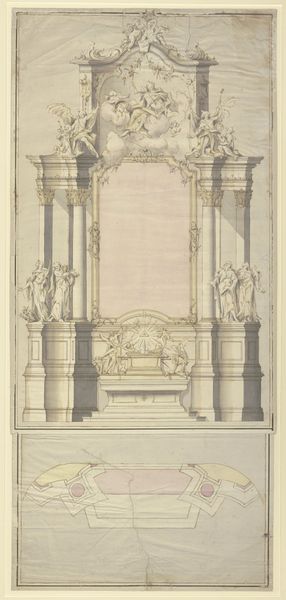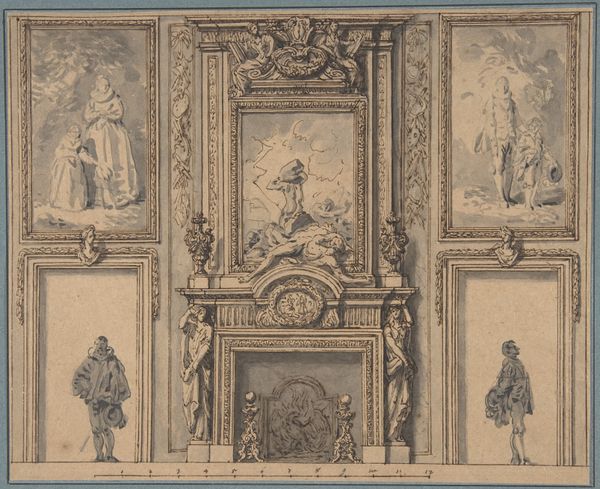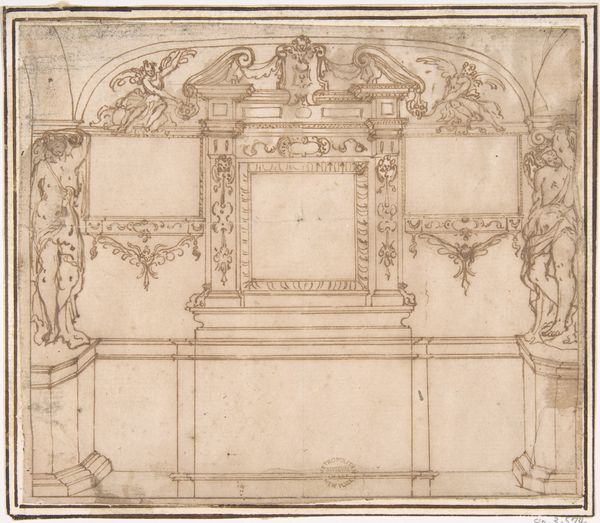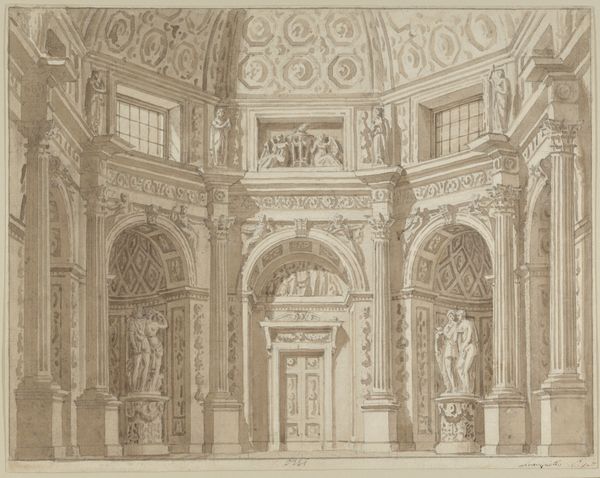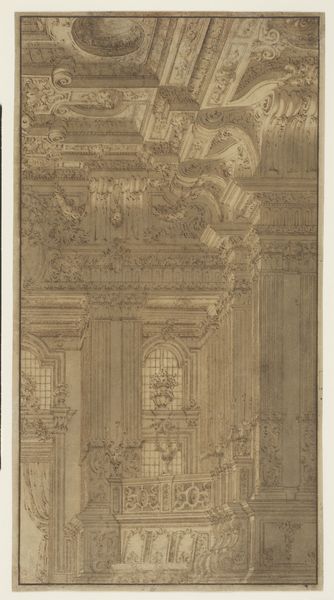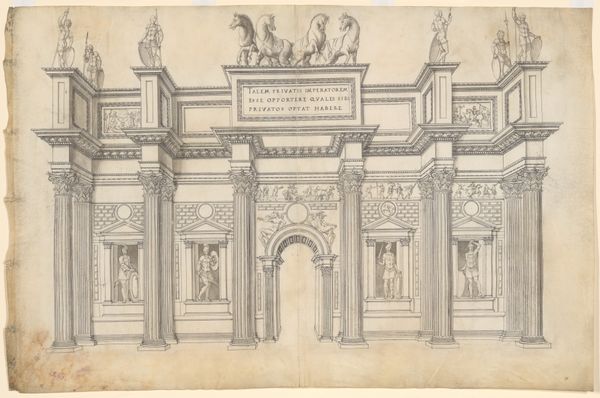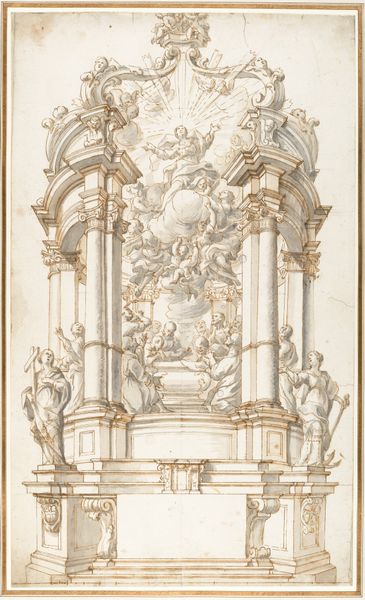
drawing, print, paper, ink
#
drawing
#
allegory
#
baroque
# print
#
perspective
#
paper
#
form
#
ink
#
line
#
cityscape
#
history-painting
Dimensions: 13 7/16 x 21 15/16 in. (34.2 x 55.8 cm)
Copyright: Public Domain
Curator: I'm immediately struck by the symmetry and sheer exuberance of detail in this drawing! It’s called "Festival Decoration", and was created by Antonio Gherardi sometime between 1660 and 1702. Editor: There’s such a theatrical feeling to it, even in this monochromatic form. I can almost hear the music and feel the celebratory energy of whatever event this stage was designed for. The candles amplify this emotional appeal! Curator: Indeed! The artwork utilizes pen and brown ink with brown wash on paper. It's currently held at The Metropolitan Museum of Art. Its scale and ornamentation serve a social purpose; these weren’t merely aesthetic exercises. Stage designs like these were employed to communicate a patron’s wealth, status, and cultural sophistication to audiences during civic festivals. Editor: I’m particularly drawn to the use of perspective and allegorical figures throughout the piece. The way they're rendered contributes greatly to this atmosphere of grandeur. Look at those sculpted figures caught mid-gesture! Curator: Perspective became a key element in theatrical design during the Baroque period to achieve greater visual illusion and heighten the viewers' perception of space. And, the use of allegory here reinforced classical ideals and legitimacy in rulers and social order. Editor: I’m noticing how strategically symbols are placed: the heraldic emblems, for example, assert authority, and those tiered candelabras carry complex connotations of abundance and divine blessing. This work uses common imagery to elevate the portrayed person or people. Curator: This "Festival Decoration" gives us insights into the complex interplay of art, power, and public spectacle in seventeenth-century European society. It demonstrates how artistic skill became an essential tool in shaping social identity. Editor: Studying its visual language encourages us to look past the historical context to consider enduring questions about the power of imagery and symbolism itself. The dialogue with tradition enriches the overall significance for an attentive spectator. Curator: Exactly. In the end, pieces like these help us better grasp our modern equivalents and assumptions we unknowingly hold even now. Editor: A testament to the ability of the Baroque masters to shape and influence cultural memory.
Comments
No comments
Be the first to comment and join the conversation on the ultimate creative platform.
